
Rolando Pinho
MD
Endoscopy Unit Clínica Radelfe - Paços de Ferreira, Portugal
Colonoscopy has the potential to decrease colorectal cancer (CRC) mortality by 60%1. However, even for experienced endoscopists, the polyp missing rate may be up to 24%2. On the other hand, a 1% increase in the adenoma detection rate has been associated with a 3% decrease in the incidence of interval CRC3. In this sense, Artificial Intelligence technologies like CAD-EYE, as new tools in the armamentarium of Endoscopists to improve the detection of polyps, may likely have the potential to decrease the incidence of interval CRC.
PATIENT INFORMATION / INDICATION
A 66 years old female underwent colonoscopy for post-polypectomy surveillance.
METHODS & RESULTS
A small polyp was detected by CAD EYE in the sigmoid colon, which was poorly distended from persistent spastic contractions and obscured by some fluid residues (Figure 1). After proper distension and cleaning, a 6 mm polyp was clearly observed in WLI (Figure 2) and LCI (Figure 3). Under BLI, CAD EYE classified the polyp as a neoplastic polyp (Figure 4). Cold snare polypectomy was performed.
CONCLUSION
Histological analysis revealed a tubulovillous adenoma with low grade dysplasia (Figure 5, 6).
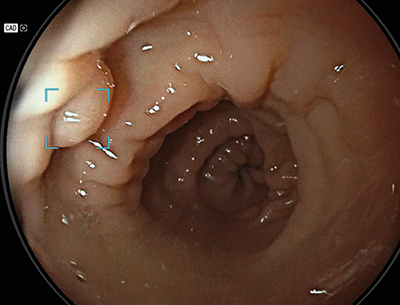
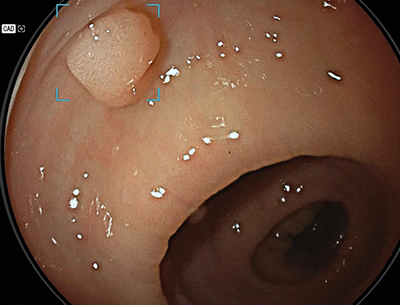
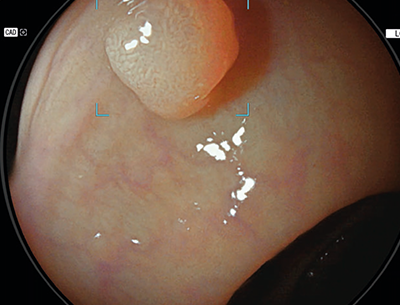
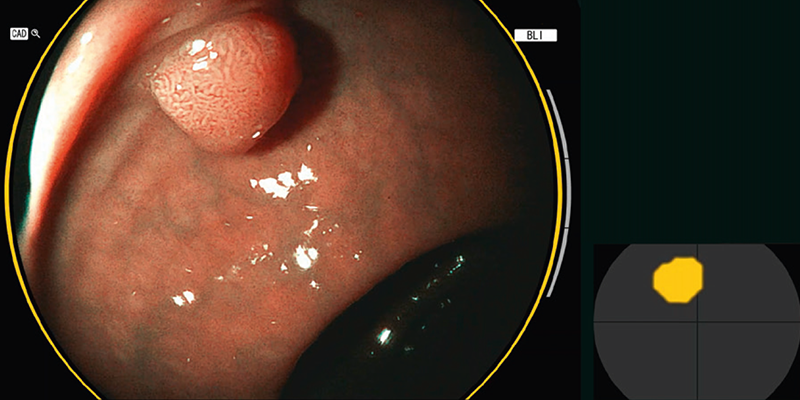
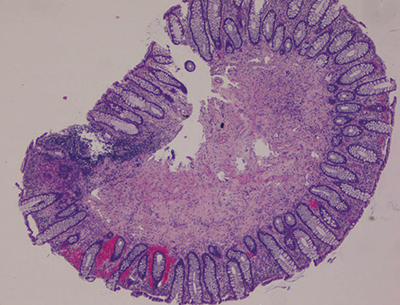
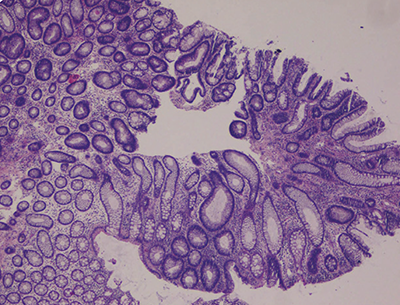
1 Baxter, NN, et al. Association between colonoscopy and colorectal cancer mortality in a US cohort according to site of cancer and colonoscopist specialty. J. Clin. Oncol. 30, 2664–2669
2 Rex DK, et al. Colonoscopic miss rates of adenomas determined by back-to-back colonoscopies. Gastroenterology 1997; 112: 24-8
3 Corley, D. A. et al. Adenoma detection rate and risk of colorectal cancer and death. N. Engl. J. Med. 370, 1298–1306.
